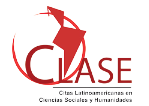Ambidestria organizacional e inovação: um estudo bibliométrico
DOI:
https://doi.org/10.5433/1981-8920.2021v26n3p352Palavras-chave:
Ambidestria organizacional, Inovação organizacional, Análise de redes, BibliometriaResumo
Objetivo: O estudo buscou apresentar uma análise bibliométrica do tema ambidestria organizacional e inovação, explorando a análise de redes de coocorrência de palavras-chave e de cocitações de referências citadas.Metodologia: A pesquisa seguiu as seguintes etapas: desenho da pesquisa com a definição do objetivo e a expressão de busca; escolha das unidades e dos tipos de análise; pesquisa na base Scopus; obtenção das redes utilizando o VOSviewer; cálculo das métricas de redes utilizando o Gephi; visualização e interpretação dos resultados.
Resultados: A rede de coocorrência evidenciou os conceitos mais relevantes da pesquisa sobre o tema. A rede de cocitação de referências citadas permitiu identificar as frentes de pesquisa.
Conclusões: Os tipos de análises reconhecem o forte relacionamento entre os temas ambidestria e inovação e sua influência na capacidade de resposta das organizações. Em cenários complexos de volatilidade e transformação, as organizações se veem cada vez mais instadas a se adaptar e aproveitar novas oportunidades, ao mesmo tempo em que precisam se preservar competitivas nos mercados em que já estão inseridas, no qual a concorrência também é cada vez mais acirrada.
Downloads
Referências
BALL, R. An introduction to bibliometrics – new development and trends. Cambridge: Chandos Publishing, 2017.
BASTIAN, M.; HEYMANN, S.; JACOMY, M. Gephi: an open source software for exploring and manipulating networks. In: INTERNATIONAL AAAI CONFERENCE ON WEBLOGS AND SOCIAL MEDIA, 3., 2009, San Jose. Proceedings […]. Palo Alto: AAAI Publications, 2009. p. 361-362.
BENNER, M.; TUSHMAN, M. Exploitation, exploration, and process management: The productivity dilemma revisited. Academy of
Management Review, v. 28, n. 2, p. 238–256, 2003.
BUI, Tat-Dat; TSAI, Feng Ming; TSENG, Ming-Lang; TAN, Raymond; YU, Krista Danielle; LIM, Ming. Sustainable supply chain management towards disruption and organizational ambidexterity: a data driven analysis. Sustainable Production and Consumption, v. 26, p. 373-410, 2021.
BURG, D.; SCHACHTER, E.; MEYER, P.; YUNG, J.; WERNICK, I.; CURRY, A. Loglet Lab. Versão 4.0, 2017. Disponível em: http://logletlab.com. Acesso em: 19 out. 2020.
CAO, Q.; GEDAJLOVIC, E.; ZHANG, H. Unpacking organizational ambidexterity: Dimensions, contingencies, and synergistic effects. Organization Science, v. 20, n. 4, p. 781–796, 2009.
CHEN, Yu-Heng; CHEN, Chia-Yon; LEE, Shun-Chung. Technology forecasting of new clean energy: The example of hydrogen energy and fuel cell. African Journal of Business Management, v. 4, n. 7, p. 1372–1380, 2010.
CIRIBELLI, M. C. Como elaborar uma dissertação de mestrado através da pesquisa científica. Rio de Janeiro: 7 Letras, 2003.
ERNST, H. The use of patent data for technological forecasting: the diffusion of CNC - technology in the machine tool industry. Small Business Economics, v. 9, n. 4, p. 361–381, 1997.
EVERS, N.; ANDERSSON, S. Predictive and effectual decisionmaking in high-tech international new ventures: a matter of sequential ambidexterity. International Business Review, v. 30, n. 1, 2021.
FRANKLIN, J.; JOHNSTON, R. Co-citation bibliometric modelling for S&T and R&D management. In: VAN RAAN, Anthony F. J. Handbook of Quantitative Studies of Science and Technology. Amsterdam: North Holland, 1988. p. 325-389.
GIBSON, C.; BIRKINSHAW, J. The antecedents, consequences, and mediating role of organizational ambidexterity. Academy of Management Journal, v. 47, n. 2, p. 209–226, 2004.
GOUVEIA, F. C. Altmetria: métricas de produção científica para além das citações. Liinc em Revista, v. 9, n. 1, p. 214-227, 2013.
GRIFFITH, B.; SMALL, H.; STONEHILL, J.; DEY, S. The structure of scientific literatures II: Toward a macro- and microstructure for science. Science Studies, v. 4, n. 4, p. 339–365, 1974.
GUPTA, A.; SMITH, K.; SHALLEY, C. The interplay between exploration and exploitation. Academy of Management Journal, v. 49, n. 4, p. 693–706, 2006.
HE, P., PEI, Y.; LIN, C. P.; Y. D. Ambidextrous marketing capabilities, exploratory and exploitative market-based innovation, and innovation performance: an empirical study on China manufacturing sector. Sustainability, v. 13, n. 3, p. 1-21, 2021.
HE, Zi-Lin; WONG, Poh-Kam. Exploration vs. exploitation: An empirical test of the ambidexterity hypothesis. Organization Science, v. 15, n. 4, p. 481–494, 2004.
HILL, C. W. L.; JONES, G. Strategic management: an integrated approach. 10. ed. Boston: Cengage Learning, 2012.
JACOBS, D. Demystification of Bibliometrics, Scientometrics, Informetrics and Webometrics. In: DIS ANNUAL CONFERENCE, 11., 2010, Richarsbay. Proceedings […]. Richarsbay: University of Zululand, 2010. p. 1-18.
ANSEN, J.; VAN DEN BOSCH, F.; VOLBERDA, H. Exploratory innovation, exploitative innovation, and performance: effects of organizational antecedents and environmental moderators. Management Science, v. 52, n. 11, p. 1661-1674, 2006.
JUNNI, P.; SARALA, R.; TARAS, V.; TARBA, S. Organizational ambidexterity and performance: A meta-analysis. Academy of Management Perspectives, v. 27, n. 4, p. 299–312, 2013.
KUCHARAVY, D.; DE GUIO, R. Application of S-shaped curves. Procedia Engineering, v. 9, p. 559-572, 2011.
LAVIE, D.; STETTNER, Uriel; TUSHMAN, M. Exploration and Exploitation Within and Across Organizations. The Academy of Management Annals, v. 4, n. 1, p. 109-155, 2010.
LEVINTHAL, D.; MARCH, J. The myopia of learning. Strategic Management Journal, v. 14, n. S2, p. 95-112, 1993.
MARCH, J. Exploration and exploitation in organizational learning. Organization Science, v. 2, n. 1, p. 71-87, 1991.
NEWMAN, M. Networks: an introduction. New York: Oxford University Press, 2010.
OECD - Organization for Economic Co-Operation and Development. Oslo Manual 2018: Guidelines for collecting, reporting and using data on innovation. 4. ed. Luxembourg: OECD Publishing, 2018.
O’REILLY, C.; TUSHMAN, M. The ambidextrous organization. Harvard Business Review, v. 82, p. 74–81, 2004.
PHAAL, R.; O’SULLIVAN, E.; ROUTLEY, M.; FORD,S.; PROBERT, D. A framework for mapping industrial emergence. Technological Forecasting and Social Change, v. 78, n. 2, p. 217-230, 2011.
PERTUSA-ORTEGA, E.; TARÍ, J. J.; PEREIRA-MOLINER, J. ; MOLINA-AZORÍN, J.; LÓPEZ-GAMERO, M. Developing ambidexterity through quality management and their effects on performance. International Journal of Hospitality Management, v. 92, p. 1-11, 2021.
PRITCHARD, A. Statistical bibliography or bibliometrics? Journal of Documentation, v. 25, n. 4, p. 348-349, 1969.
RAISCH, S.; BIRKINSHAW, J. Organizational ambidexterity: Antecedents, outcomes, and moderators. Journal of Management, v. 34, n. 3, p. 375–409, 2008.
RAISCH, S.; BIRKINSHAW, J.; PROBST, G.; TUSHMAN, M. Organizational ambidexterity: Balancing exploitation and exploration for sustained performance. Organization science, v. 20, n. 4, p. 685-695, 2009.
ROSING, K.; FRESE, M.; BAUSCH, A. Explaining the heterogeneity of the leadership-innovation relationship: Ambidextrous leadership. The Leadership Quarterly, v. 22, n. 5, p. 956-974, 2011.
SANTOS, A.; FAZION, C.; MEROE, Giuliano. Inovação: um estudo sobre a evolução do conceito de Schumpeter. Cadernos de Administração (PUC-SP), v. 5, n. 1, 2011. SCHUMPETER, Joseph Alois. A teoria do desenvolvimento econômico. São Paulo: Nova Cultural, 1988. SCHMIDT.
Frank. Meta-analysis: a constantly evolving research integration tool. Organizational Research Methods, v. 11, n. 1, p. 96-113, 2008.
SILUO, Y.; QINGLI, Y.; DONG, J. Are scientometrics, informetrics, and bibliometrics different? Data Science and Informatics, v. 1, n. 1, 2020.
SMITH, W.; TUSHMAN, M. Managing strategic contradictions: a top management model for managing innovation streams. Organization Science, v. 16, n. 5, p. 522-536, 2005.
VAN DEN BUUSE, D.; VAN WINDEN, W.; SCHRAMA, W. Balancing Exploration and Exploitation in Sustainable Urban Innovation: An Ambidexterity Perspective toward Smart Cities. Journal of Urban Technology, v. 28, n. 1-2, p. 175-197, 2021.
VAN ECK, N. J.; WALTMAN, L. Software survey: VOSviewer, a computer program for bibliometric mapping. Scientometrics, v. 84, n. 2, p. 523–538, 2010.
VAN ECK, N .J. ; WALTMAN, Ludo. VOSviewer manual. Leiden: Universiteit Leiden, 2020. Disponível em: https://www.vosviewer.com/ documentation/Manual_VOSviewer_1.6.16.pdf. Acesso em: 07 abr. 2021
WALTMAN, L.; VAN ECK, N. J.; NOYONS, E. A unified approach to mapping and clustering of bibliometric networks. Journal of Informetrics, v. 4, n. 4, p. 629-635, 2010.
ZHANG, Shaoling Katee; TANG, Tanya Ya; WU, Fang. The ambidextrous patterns for managing technological and marketing innovation. Industrial Marketing Management, v. 92, p. 34-44, jan. 2021.
ZHOU, Luanping; PENG, Michael Yao-Ping; SHAO, Lijin; YEN, Hsin-Yi; LIN, Ku-Ho; ANSER, Muhammad Khalid. Ambidexterity in Social Capital, Dynamic Capability, and SMEs’ Performance: Quadratic Effect of Dynamic Capability and Moderating Role of Market Orientation. Frontiers in Psychology, v. 11, 2021.
ZUOIC, I.; CATER, T. Bibliometric metrods in management organization. Organizational Research Methods, v. 18, n. 3, p. 429-472, 2014.
Downloads
Publicado
Como Citar
Edição
Seção
Licença
A revista se reserva o direito de efetuar, nos originais, alterações de ordem normativa, ortográfica e gramatical, com vistas a manter o padrão culto da língua e a credibilidade do veículo. Respeitará, no entanto, o estilo de escrever dos autores. Alterações, correções ou sugestões de ordem conceitual serão encaminhadas aos autores, quando necessário.
O conteúdo dos textos e a citação e uso de imagens submetidas são de inteira responsabilidade dos autores.
Em todas as citações posteriores, deverá ser consignada a fonte original de publicação, no caso a Informação & Informação.
















